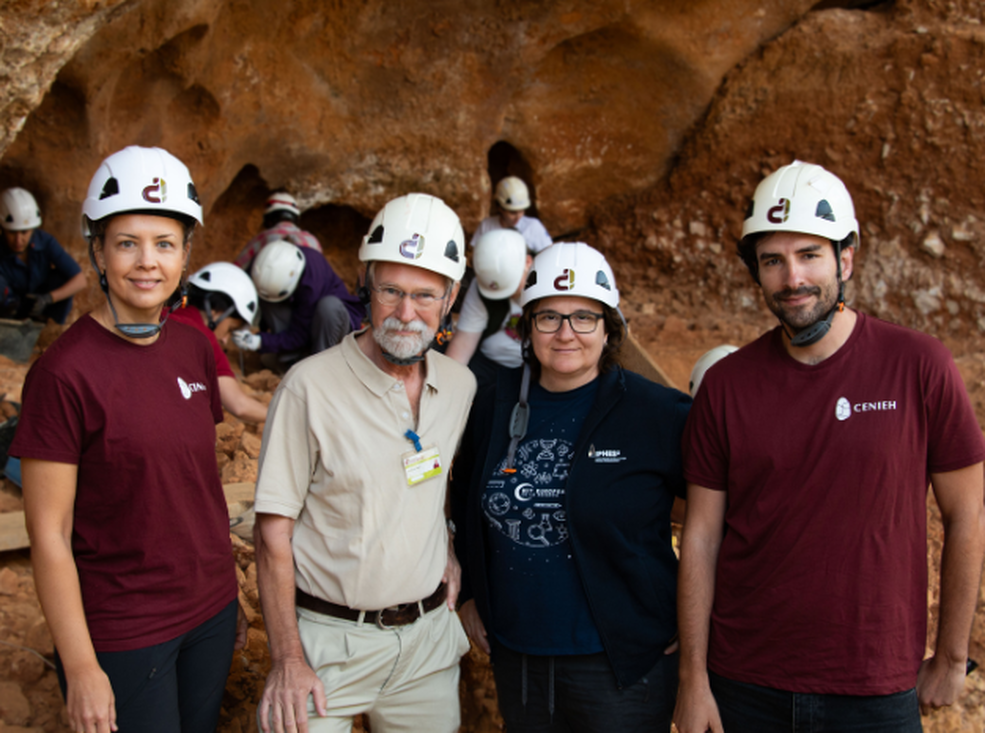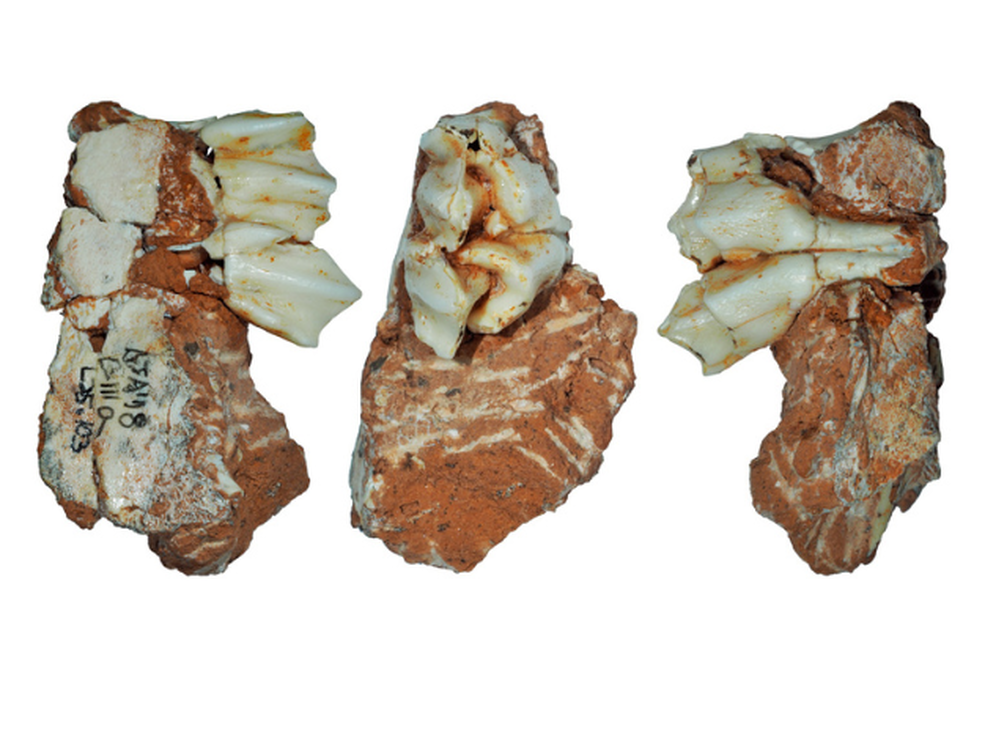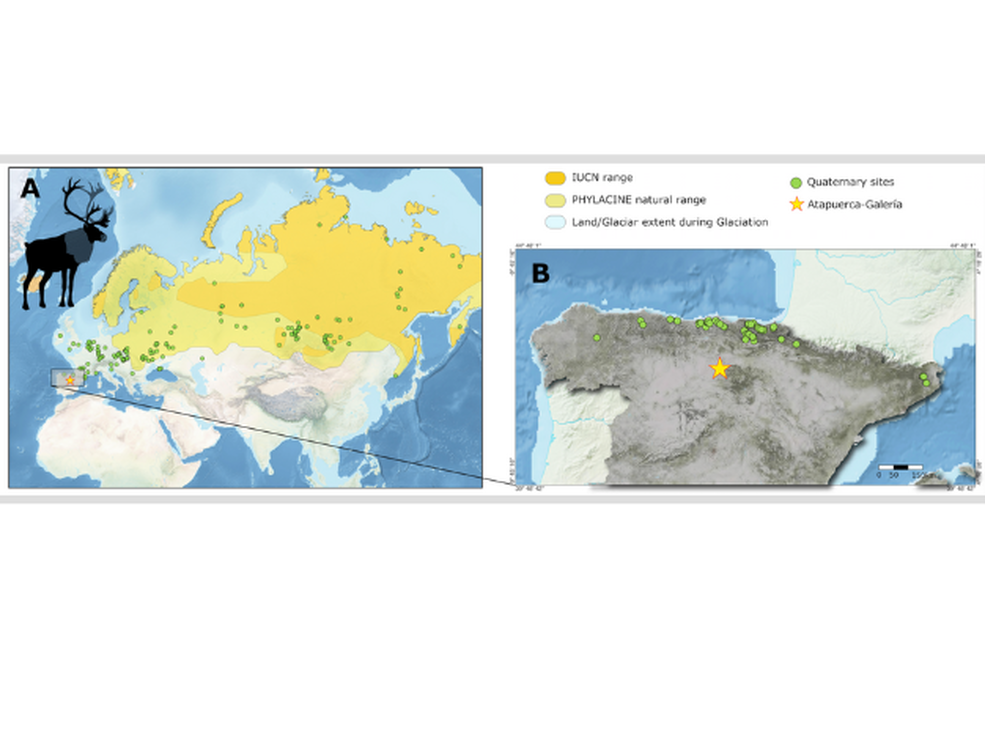The oldest evidence of glacial fauna in the Iberian Peninsula has been found in Atapuerca.
This is a reindeer tooth that is between 243,000 and 300,000 years old, which indicates the intensity of the glacial conditions of this period in the Iberian Peninsula.
The fossil, discovered in a layer containing human remains and lithic tools, proves that reindeer coexisted with early humans
A fossil tooth dating from between 300,000 and 243,000 years ago, recovered from the Galería site in the Sierra de Atapuerca (Burgos), confirms that reindeer (Rangifer) inhabited the interior of the Iberian Peninsula during a glacial period far earlier than previously believed. This discovery represents both the southernmost and the oldest record of this species in all of Eurasia.
The fossil was found in the same layer as a human cranial fragment and numerous stone tools, indicating that these animals coexisted with human groups during the Middle Pleistocene. “The presence of reindeer in the same unit as human remains and evidence of human activity at Galería highlights the flexibility of Pleistocene human groups in adapting to different climatic conditions, even extremely cold ones,” explains Dr. Isabel Cáceres, professor at the Universitat Rovira i Virgili, researcher at IPHES-CERCA, and co-author of the study.
The research was led by scientists from the Museo Nacional de Ciencias Naturales (MNCN-CSIC), the Centro Nacional de Investigación sobre la Evolución Humana (CENIEH), and the Institut Català de Paleoecologia Humana i Evolució Social (IPHES-CERCA).
The fossil was discovered in stratigraphic unit GIIIa of the Galería site. Its presence confirms that climatic conditions during this period were fully glacial, and that cold-adapted faunas arrived earlier and spread farther south than previously thought. The Iberian Peninsula, like other southern European peninsulas, acted as a refuge for species not adapted to cold. “This fossil, which belongs to a glacial fauna, helps refine the dating of the site’s layers but also confirms that populations in the Peninsula were affected by successive ice ages during the Pleistocene, the epoch spanning from 2.6 million to 11,700 years ago,” explains Jan van der Made, researcher at MNCN. “The presence of this reindeer at such a southern latitude suggests that glacial climates may have impacted Iberian fauna earlier and more intensely than previously assumed,” adds Van der Made.
The last glaciations expanded the so-called mammoth steppe ecosystem—home to mammoths and woolly rhinoceroses—as far south as Madrid and even Granada, much farther south than Atapuerca. “This study underscores the importance of understanding the biogeographic patterns of glacial fauna and the adaptive capacity of human populations during the Middle Pleistocene, between approximately 800,000 and 125,000 years ago,” concludes Ignacio Aguilar Lazagabaster, researcher at CENIEH and IPHES-CERCA.
Bibliographic reference
Made J van der, I.A. Lazagabaster, P. García-Medrano e I. Cáceres. (2025) Southernmost Eurasian record of reindeer (Rangifer) in MIS 8 at Galería (Atapuerca, Spain): evidence for progressive south-ern expansion of glacial fauna across climatic cycles. Quaternary. https://doi.org/10.3390/quat8030043



